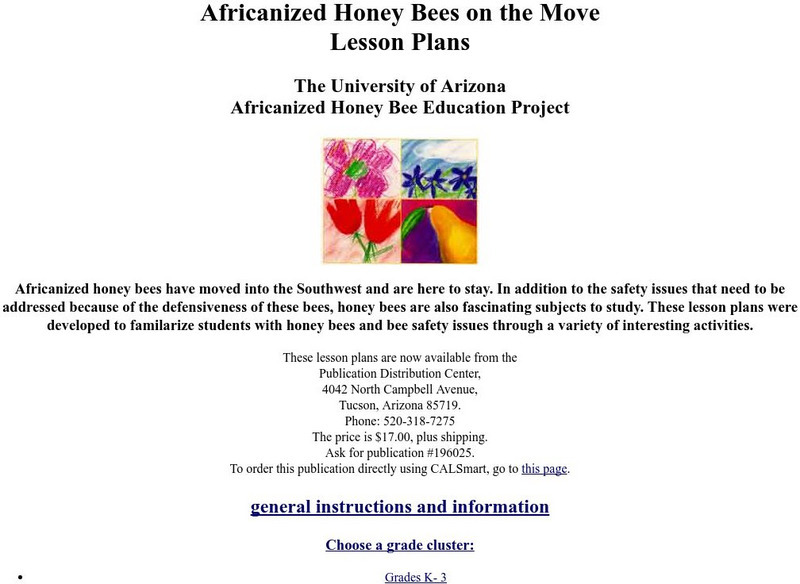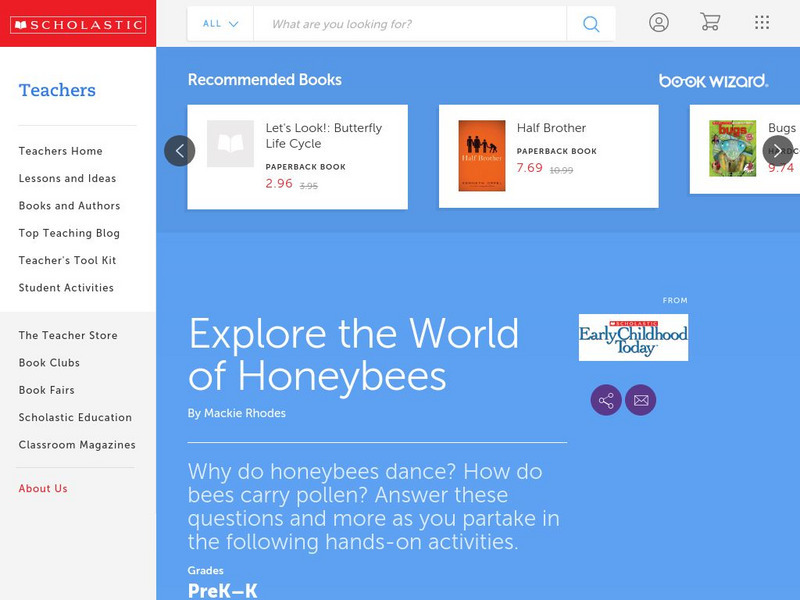Hi, what do you want to do?
Curated OER
Pumpkin, Pumpkin
First graders understand that pumpkins grow slowly over several months. In this pumpkin lesson, 1st graders listen to the book Pumpkin, Pumpkin and recall the sequence of the pumpkin life cycle. Students create pumpkin artwork showing...
Curated OER
Interesting Insects
Students discover the characteristics of insects. They explore insects through cooperative learning, group projects, hands on activities, and poetry. They gain knowledge of insect life cycles, habitat, and physical characteristics.
Curated OER
Life Cycles: A Never-Ending Story
Second graders describe the sequence of events in the life cycles of a butterfly, frog, and a deer. They observe the differences and similarities of parents and babies. They also discover that at different stages the animals can be...
Curated OER
Forest Food Web
Students explore the elements of a forest ecosystem. They examine the elements needed to form a forest food web. Students construct and describe food webs that include nonliving elements of the ecosystem.
Curated OER
Be A Bug Scout
Students perform outside activities to determine the amount of insects, flowers, or common weeds within an area. They predict the number of insects they will find within their square area. Using calculators, students organize the data...
Curated OER
Fun with Flowers
Students make observations of flowers. In this life science lesson, students look at flowers, then draw and color their favorite flowers. Lesson includes extension activities.
Curated OER
How Does Your Garden Grow?
Students complete activities to learn about the life cycle of a seed. In this plant growth lesson, students complete activities for the life cycles of seeds.
Curated OER
Painted Balsa-Foam Butterfly
Students research a butterfly and create butterfly art. For this visual arts lesson, students choose a specific butterfly to research and create a Balsa-Foam butterfly of the same species. Students use Balsa-Foam, modeling tools, and...
Curated OER
Apple: Seed to Tree
Students grow seeds of an apple and learn about Johnny Appleseed. In this apples lesson plan, students map Johnny Appleseed's travels, learn how he got his name, compare different Johnny Appleseed books, and grow apple seeds themselves.
Curated OER
Bugs in the Woods
Second graders identify insects and plants in the forest ecosystem in a structured field trip with stations and activity booklets. In this bugs instructional activity, 2nd graders explore the ecosystem of the forest, complete the...
Curated OER
The Seed Match
Learners study seeds and plants. In this science activity, students explore seeds from various types of plants and complete a worksheet about seeds. Learners discuss plants that are fruits and vegetables and where they grow.
Curated OER
Tree Identification
In this tree identification worksheet, students collect samples from different trees and identify them using the deciduous tree guide or the conifer key.
Curated OER
Catch As Catch Can
Students capture and observe insects. Using provided netting, students design and create a butterfly net. They study many types of insects and their benefits. After identifying insects caught, students complete a graph. Students write...
Curated OER
Plant Party
Students identify plant parts. In this plants lesson, students bring in a vegetable. Each student classifies which part of the plant their vegetable comes from (flower, root, ect.) Students identify the parts of their vegetable and later...
Curated OER
Catch as Catch Can
Students investigate insects. In this insect analysis lesson, students catch insects using nets they make. They identify the insects they catch and create a chart to show the numbers and varieties. This lesson includes a vocabulary list...
Curated OER
Caterpillar Camouflage
Learners list animals, plant parts, and reasons for caterpillars to camouflage themselves. In this animal and plant adaptations lesson plan, students also play a game where they use colors as camouflage.
Other
Science and Kids Activities: Pollination and Seed Dispersal
Second graders learn how plants depend on animals to disperse their seeds. Students will learn about ways that animals can disperse seeds. They will design their own model and compare it to the real action of plants and animals. In the...
Technovation
Curiosity Machine: Challenge: Build a Blooming Flower
Can you create a blooming flower that would attract pollinators? This Curiosity Machine project challenges students to make this flower using common household items. Site includes a place for students to document their process as well as...
Starfall
Starfall: All About Seeds
This lesson focuses on seeds and the plants they grow into. It includes kinds and sizes of seeds, pollination of plants, plant parts, how seeds travel, and what plants need to grow.
University of Arizona
University of Arizona: Africanized Honey Bees on the Move
This is a lesson plan for grades 9 - 12. There are worksheets that can be printed out. Each activity and objective is stated.
Mocomi & Anibrain Digital Technologies
Mocomi: Reproduction in Plants
Discusses reproduction in plants either sexual or asexual and describes reproduction parts and pollination.
Discovery Education
Discovery Education: Plants
The Discovery Channel provides numerous lesson plans dealing with plants. Content is organized by grade level, but all lesson plans include suggestions for adaptations for older or younger audiences.
Scholastic
Scholastic Instructor: Explore the World of Honeybees
Discover more about bees through this educational resource. This resource features math and science activities, experiments, fun facts, and more.
Ducksters
Ducksters: Biology for Kids: Flowering Plants
Kids learn about flowering plants in the science of biology including their life-cycle, structures of a flower, fruit, seeds, and pollination.
Other popular searches
- 2nd Grade Pollinators
- Plant Pollinators Insects
- 1st Grade Pollinators
- Plants Pollinators
- 6th Grade Pollinators
- Plant Pollinators
- Plants and Pollinators
- Pollinators Decline
- Power of Pollinators
- Flowers Pollinators
- The Power of Pollinators


























